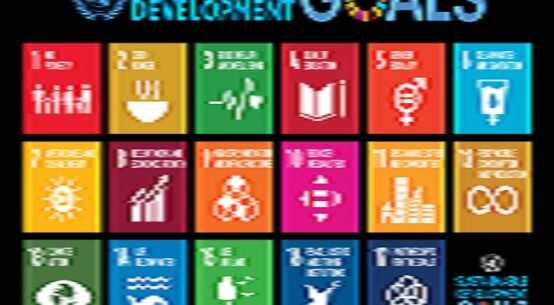
In the deserts of Gujarat, something remarkable is happening. On my recent visit I saw hundreds of trucks moving under the warm Indian sun. Thousands of hardworking young people from all corners of Bharat, as Indians now often call their nation, are turning around the previously empty and harsh landscape.
This is where the world’s largest combined solar and wind plant is coming up.
When completed, it will produce 30 gigawatt of wonderful clean and green energy. That is as much as the total hydropower production of my home country Norway. We are 100% fueled by hydro in our net, a rich nation in a cold climate, consuming far too much energy.
The Gujarat miracle is the work of the Adani Group. Gautam Adani told me his moving personal story. They were eight siblings living with parents in one room in Ahmedabad. There was no electricity so if he wished to study after dark he had to go outdoors, reading under the street lamps. At the age of 14, he left home and started business. Now he is one of the richest in India and very high on the global list also.
Gautam Adani made a lot of money in coal. Now he has enormous ambitions for renewables, supporting the policies of his friend prime minister Narendra Modi, turning the world’s largest nation – from grey to green. Adani is about delivery, not just talk.
Last year, the second largest rain forest nation saw close to zero deforestation, an enormous service to Mother Earth. It happened because the Indonesian government put in place all the right policies for forest conservation and because Indonesian big business realized they can do fine without deforestation.
Take for example, RGE (Royal Golden Eagle) Group, one of the world’s biggest paper and pulp companies. RGE has decided they will have no deforestation in their value chains. They can make their paper tissues, packaging materials, viscose clothes and the palm oil business without cutting virgin trees. RGE even protects a vast intact rain forest in the island of Sumatra. It does it well with fire brigades and helicopters on standby in case of any challenge.
And of course – it’s China. China last year invested mindboggling 890 billion dollars in renewables. That’s as much as the total economy of Turkey or Switzerland. China last year added more solar energy in one year than the second biggest solar nation, the US, has done in its entire history.
Chinese companies produced solar panels ten times the size of Norwegian hydropower and added well over half of all global wind or hydro energy. China accounts for 60% of the world’s metro lines, electric batteries and cars, 70 % of the high speed rail. More than 95% of all electric buses are running on Chinese roads. China is the indispensable nation for global climate action. No one can go green at an acceptable cost without China.
What do India, Indonesia and China have in common?
They are the three largest developing nations.
At the climate talks in Glasgow and Dubai, and for sure also later this year in Baku, intellectually lazy negotiators and commentators speak as if the West is leading the world on the environment.
They get it dead wrong. Europe was leading, ten years ago. Now it’s time the West starts learning. Asia is leading.
India, Indonesia and China do not focus on climate only as a problem. Their leaders Modi, Xi and Prabowo see climate as an opportunity. Taking climate action make economic, not only ecological, sense. They can create jobs and prosperity, leave poverty behind, by going green.
Ola, the Uber of India, captures this in a fun slogan “Tesla for the West, Ola for the rest”. They believe they can make high quality, low cost, electric scooters and later cars, capturing global markets.
China had few stocks in the old automobile industry. When Western car makers were sleeping or even cheating on their emission records, China built the world’s dominant electric car ecosystem. BYD recently overtook Tesla as the largest electric car brand. CATL is the lead electric battery maker. Last year China passed Japan as the number one exporter of cars. Going electric makes perfect business as well as environment sense for China.
For the first time in human history there is a green pathway to prosperity.
The price for solar has fallen by 90% in a decade, mainly thanks to China. The price of wind energy nearly as much. For two hundred years after the Industrial revolution in the 1780s any nation which wanted to develop, could only do it through fossils. Now solar is cheaper than coal. Everywhere. A nation moving from coal to solar saves money. Going green is not a cost.
In January, prime minister Modi launched an innovative program for ten million Indian homes installing roof top solar. The owner of the house register the interest digitally. The utility company, the state and the banks cover the risk, not the owner. The size is astonishing.
The divide between these realities and the climate talks could hardly be wider. Last year in Dubai the focus was on loss and reparatioins. This is a completely fair demand, American emissions per capita up to today are 25 times Indian, 8 times the Chinese and the divide is even greater if we compare to Africa or small islands development states.
No one should ever blame developing nations for the climate calamities.
The weakness of this approach is however not that It’s not fair, but that it will not lead to the promised land. The money allotted by the West will be much below expectations, not even in the proximity of what is needed. Worse, the money distributed through global institutions will be slow, bureaucratic and often inadequate.
There is much talk of reforms of the global financial institutions. There has been a lot of ideas about reform of the UN also. Not one meaningful reform has happened over the last decade. The world’s largest nation, soon to become the world’s third largest economy, India, is not even on the UN security council. Anyone looking for Indonesians in the UN or global institutions need to mobilize the CIA to find them !
Reforms need support, but they will be slow, if at all they happen.
I was minister of International Development of Norway for nearly seven years. We brought Norwegian aid to 1%, the highest in the world. But if development assistance was what created prosperity some African nations would be the most developed countries on earth. India, Indonesia and China, add Korea, Singapore or Vietnam, have received very limited aid. They have got access to markets and developed strong domestic states and industries. What would Korea be without Hyundai and Samsung? This is also how the green transformation will happen this century.
The fast way to green developments run through private investment and the carbon markets, voluntary or not. This money is much larger and a lot more flexible and fast than aid. Any developing nation is best advised to build on domestic strengths and to tap into these capital flows.
Admitted the Asian giants have a few advantages. They have strong states with development-oriented leaders dedicated to the green transformation. They have huge home markets. The populations of India, China and the African continent are largely the same.
But India is one market from Tamil Nadu to Arunachal Pradesh and China one market from Guangdong to Heilongjiang. Africa comprises 54 separate states. When you succeed in the large and price conscious Indian or Chinese markets, the price is normally low and the quality high. That makes you globally competitive.
Asia also has higher level of education and China a large highly educated working class.
But still the green transformation is a huge opportunity more than a problem for developing nations. Going green now saves money. It makes it possible to leap frog into the renewable future without building the fossil infrastructure first. Even the poorest nations can develop a digital economy without putting up phone lines.
The (limited) money which will flow from Western donors and from International institutions should resolutely be used to leverage private investment in solar, wind, hydropower and green industries. The anticipated risk investing in renewables in Congo is higher than in Vietnam. That difference must be covered by donor money.
Only for climate adaptation purposes where there is no business model, we should turn to grants.
I am looking forward to going to Baku. Maybe, it can be the watershed moment when the world realizes that in the 21st century Asian developing nations are providing the global green leadership? They have showed the world going green is an opportunity.
Erik Solheim is a Norwegian diplomat and former politician. He served in the Norwegian government from 2005 to 2012 as Minister of International Development and Minister of the Environment, and as Under-Secretary-General of the United Nations and Executive Director of the United Nations Environment Programme from 2016 to 2018


